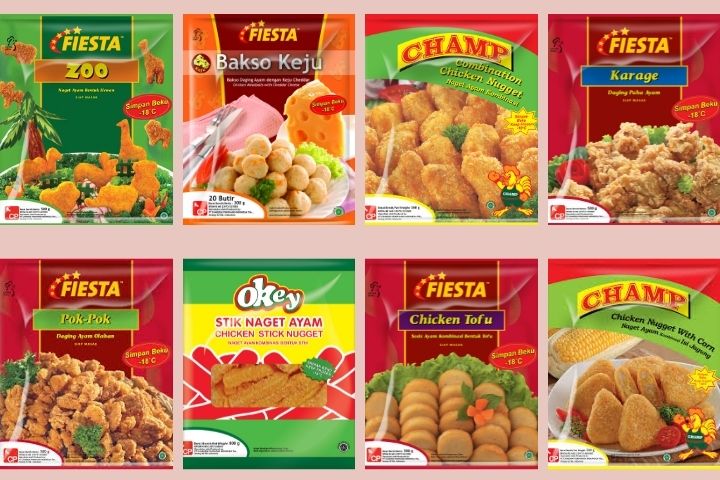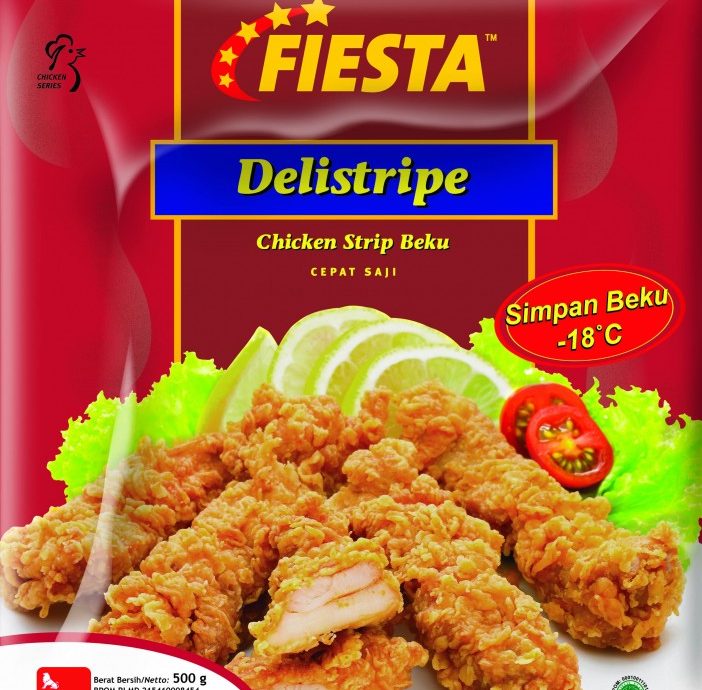Food Fiesta: A Culinary Symphony of Culture and Community
Food fiestas are vibrant celebrations that showcase the culinary heritage and cultural diversity of communities around the world. From bustling street markets to grand festivals, these events offer a tantalizing glimpse into the traditions and flavors that define a region.
Introduction to Food Fiesta

A food fiesta is a culinary celebration that brings people together to enjoy and share delicious food. Food fiestas have been a part of human culture for centuries, with origins in ancient gatherings where communities would come together to share food and celebrate special occasions.
Today, food fiestas are held all over the world, each with its own unique flavors and traditions. Some of the most famous food fiestas include:
La Tomatina
- Held in the town of Buñol, Spain, La Tomatina is a massive tomato-throwing festival that attracts thousands of participants each year.
- The festival is believed to have originated in a food fight between local youths in 1945 and has since become a global phenomenon.
Oktoberfest
- Oktoberfest is a 16-day beer festival held annually in Munich, Germany. The festival features traditional German food, music, and dancing.
- Oktoberfest is one of the largest and most popular food festivals in the world, attracting millions of visitors each year.
Diwali
- Diwali is a Hindu festival of lights that is celebrated in India and other parts of the world. Diwali is a time for families to come together and share food, sweets, and fireworks.
- Diwali is one of the most important festivals in the Hindu calendar and is a time for celebration and joy.
Culinary Delights of a Food Fiesta
A food fiesta is a culinary celebration that brings together diverse cuisines from around the world. It is a melting pot of flavors, aromas, and cooking techniques that tantalize the taste buds and create a memorable gastronomic experience.
From traditional dishes to innovative creations, food fiestas offer a wide array of culinary delights. Visitors can indulge in the spicy curries of India, the savory tacos of Mexico, the delicate sushi of Japan, and the hearty stews of Europe.
Each dish tells a story of its cultural heritage, reflecting the traditions, ingredients, and cooking methods of its region.
Variety of Cuisines and Dishes
The variety of cuisines and dishes at a food fiesta is truly astounding. From street food vendors to fine-dining establishments, there is something to cater to every palate and preference.
- Indian Cuisine:Known for its aromatic spices and vibrant flavors, Indian cuisine offers a tantalizing array of dishes such as chicken tikka masala, biryani, and samosas.
- Mexican Cuisine:Mexican food is a fusion of indigenous and Spanish influences, resulting in dishes like tacos, burritos, and enchiladas that are bursting with flavor.
- Japanese Cuisine:Japanese cuisine is renowned for its delicate flavors and emphasis on fresh ingredients. Sushi, tempura, and ramen are just a few of the many popular dishes to try.
- European Cuisine:European cuisine is a diverse collection of culinary traditions, ranging from the hearty stews of Germany to the elegant pastries of France. Dishes like paella, pizza, and fish and chips are sure to delight.
Unique Flavors, Ingredients, and Cooking Techniques
Food fiestas showcase not only the diversity of cuisines but also the unique flavors, ingredients, and cooking techniques used in each dish.
- Spices and Herbs:Spices and herbs play a vital role in enhancing the flavors of food. Indian cuisine is famous for its use of garam masala, while Mexican cuisine relies heavily on cilantro and lime.
- Fresh Ingredients:Many food fiesta dishes emphasize the use of fresh, seasonal ingredients. Japanese cuisine, for example, showcases the delicate flavors of fresh fish and vegetables.
- Cooking Techniques:Traditional cooking techniques are often used to create authentic flavors. Tandoori chicken, for instance, is cooked in a clay oven, giving it a unique smoky flavor.
Cultural Significance of Dishes
The dishes served at food fiestas often have deep cultural significance, reflecting the traditions and history of the host community.
- Pozole:In Mexico, pozole is a traditional soup served during celebrations and festivals. It is made with hominy, pork, and a variety of spices.
- Paella:In Spain, paella is a national dish made with rice, seafood, and vegetables. It is often cooked in a large pan and shared among family and friends.
- Sushi:In Japan, sushi is more than just a dish; it is an art form. The delicate preparation and presentation of sushi reflects the Japanese culture’s emphasis on precision and aesthetics.
The Social Aspect of Food Fiestas

Food fiestas are not just about indulging in culinary delights; they are also vibrant social events that foster a sense of community and cultural exchange. Food has the unique ability to bring people together, creating a shared experience that transcends differences.At
food fiestas, people from all walks of life come together to celebrate their love of food and culture. They share meals, exchange recipes, and engage in lively conversations. This interaction helps break down barriers and promotes understanding between different cultures.
Activities and Traditions
Food fiestas often feature activities and traditions that enhance their social aspect. These may include:
-
-*Cooking demonstrations
Skilled chefs showcase their culinary prowess, sharing their techniques and recipes with the audience.
-*Food competitions
Friendly competitions, such as cooking contests or chili cook-offs, add an element of excitement and encourage participants to showcase their culinary skills.
-*Cultural performances
Traditional music, dance, and storytelling performances add a festive atmosphere and provide a glimpse into the cultural heritage of the community.
-*Community meals
Shared meals, such as potlucks or communal feasts, encourage participants to contribute their own dishes and foster a sense of belonging.
Economic Impact of Food Fiestas

Food fiestas bring a surge of economic benefits to local businesses and communities. These events attract a large number of attendees, boosting revenue for local restaurants, food vendors, and other businesses.
Moreover, food fiestas serve as a platform for local entrepreneurs to showcase their culinary creations and gain recognition within the industry. The influx of visitors also generates revenue for local hotels, transportation providers, and other tourism-related businesses.
Tourism and Revenue
- Food fiestas attract tourists from near and far, contributing to increased hotel occupancy rates and tourism revenue.
- A study conducted by the International Food and Beverage Association found that food festivals generate an average of $100 million in revenue per event.
- In 2023, the Taste of Chicago food festival attracted over 3 million visitors and generated an estimated $150 million in economic impact for the city.
Support for Local Entrepreneurs
- Food fiestas provide a platform for local entrepreneurs to introduce their culinary creations to a wider audience.
- These events offer opportunities for small businesses to gain recognition, establish connections, and expand their customer base.
- The success of food vendors at fiestas can lead to the establishment of permanent restaurants or food trucks, creating new jobs and contributing to the local economy.
Challenges and Opportunities in Organizing Food Fiestas
Organizing food fiestas presents a myriad of challenges and opportunities. Understanding these aspects is crucial for successful planning and execution of these vibrant events.
Challenges faced by organizers include logistics, funding, and safety concerns. Logistics involve managing the flow of attendees, vendors, and food supplies. Funding is essential to cover expenses such as venue rental, equipment, and marketing. Safety concerns must be addressed to ensure the well-being of participants and staff.
Innovative Approaches to Overcome Challenges, Food fiesta
Innovative approaches can help organizers overcome these challenges. These include:
- Using online platforms for vendor registration and attendee ticketing to streamline logistics.
- Seeking sponsorship from local businesses and organizations to supplement funding.
- Implementing safety protocols such as crowd control measures and food handling regulations.
Opportunities for Growth and Expansion
Food fiestas offer opportunities for growth and expansion. By incorporating new themes, cuisines, and interactive elements, organizers can attract a wider audience and enhance the overall experience. Collaboration with local farmers and food producers can promote sustainability and support local businesses.
Expanding the reach of food fiestas through online platforms and social media can increase visibility and engagement. This can lead to increased attendance and potential revenue streams.
Cultural Preservation and Identity
Food fiestas play a pivotal role in preserving cultural traditions and fostering local identity. These events serve as a platform to showcase the unique culinary heritage and cultural practices of diverse communities, reinforcing a sense of cultural pride and belonging.
Preservation of Culinary Heritage
Food fiestas celebrate and promote traditional dishes, recipes, and cooking techniques that have been passed down through generations. By showcasing these culinary traditions, the events help to preserve the intangible cultural heritage of communities, ensuring its continuity for future generations.
Cultural Pride and Identity
Food fiestas foster a sense of cultural pride among participants and attendees. The celebration of local cuisine reinforces the unique identity of communities, creating a shared sense of place and belonging. These events promote appreciation for the diverse culinary traditions that shape cultural landscapes.
Examples
- In Mexico, the annual Guelaguetza festival showcases the culinary traditions of the indigenous Zapotec and Mixtec communities, celebrating their rich heritage and cultural identity.
- The Obon festival in Japan features traditional dishes such as mochi and dango, which hold significant cultural and spiritual meaning, reinforcing the community’s cultural bonds.
Conclusion
In summary, food fiestas are vibrant celebrations that showcase the culinary traditions, foster community bonds, and drive economic growth. They provide a platform for cultural exchange, allowing people to experience diverse flavors and traditions. Food fiestas also play a vital role in preserving cultural heritage and identity.
As we look towards the future, it is essential to recognize the importance of food fiestas in our society. By supporting these events, we can continue to promote cultural diversity, strengthen community ties, and stimulate economic development. Let us embrace the culinary delights and social connections that food fiestas offer, and work together to ensure their continued success.
Question & Answer Hub: Food Fiesta
What is the origin of food fiestas?
Food fiestas have their roots in ancient communal gatherings where people shared food and celebrated special occasions.
What are some unique dishes found at food fiestas?
Food fiestas feature a wide variety of dishes, often representing the local cuisine and traditions. From street food delicacies to elaborate multi-course meals, there is something for every palate.
How do food fiestas promote cultural exchange?
Food fiestas bring together people from diverse backgrounds, allowing them to share their culinary traditions and learn about different cultures through food.
What is the economic impact of food fiestas?
Food fiestas can have a significant economic impact on local businesses and communities, attracting tourism, generating revenue, and supporting local entrepreneurs.
